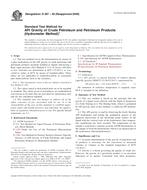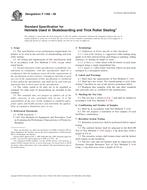1.1 This practice covers procedures for characterizing neutron fluence from a source in terms of an equivalent monoenergetic neutron fluence. It is applicable to neutron effects testing, to the development of test specifications, and to the characterization of neutron test environments. The sources may have a broad neutron-energy range, or may be mono-energetic neutron sources with energies up to 20 MeV. This practice is not applicable in cases where the predominant source of displacement damage is from neutrons of energy less than 10 keV. The relevant equivalence is in terms of a specified effect on certain physical properties of materials upon which the source spectrum is incident. In order to achieve this, knowledge of the effects of neutrons as a function of energy on the specific property of the material of interest is required. Sharp variations in the effects with neutron energy may limit the usefulness of this practice in the case of mono-energetic sources.
1.2 This practice is presented in a manner to be of general application to a variety of materials and sources. Correlation between displacements (1-3) caused by different particles (electrons, neutrons, protons, and heavy ions) is beyond the scope of this practice. In radiation-hardness testing of electronic semiconductor devices, specific materials of interest include silicon and gallium arsenide, and the neutron sources generally are test and research reactors and californium-252 irradiators.
1.3 The technique involved relies on the following factors: (1) a detailed determination of the fluence spectrum of the neutron source, and (2) a knowledge of the degradation (damage) effects of neutrons as a function of energy on specific material properties.
1.4 The detailed determination of the neutron fluence spectrum referred to in 1.3 need not be performed afresh for each test exposure, provided the exposure conditions are repeatable. When the spectrum determination is not repeated, a neutron fluence monitor shall be used for each test exposure.
1.5 The values stated in SI units are to be regarded as standard. No other units of measurement are included in this standard.
1.6 This standard does not purport to address all of the safety concerns, if any, associated with its use. It is the responsibility of the user of this standard to establish appropriate safety and health practices and determine the applicability of regulatory limitations prior to use.
Product Details
- Published:
- 06/01/2009
- Number of Pages:
- 27
- File Size:
- 1 file , 240 KB
- Redline File Size:
- 2 files , 600 KB


